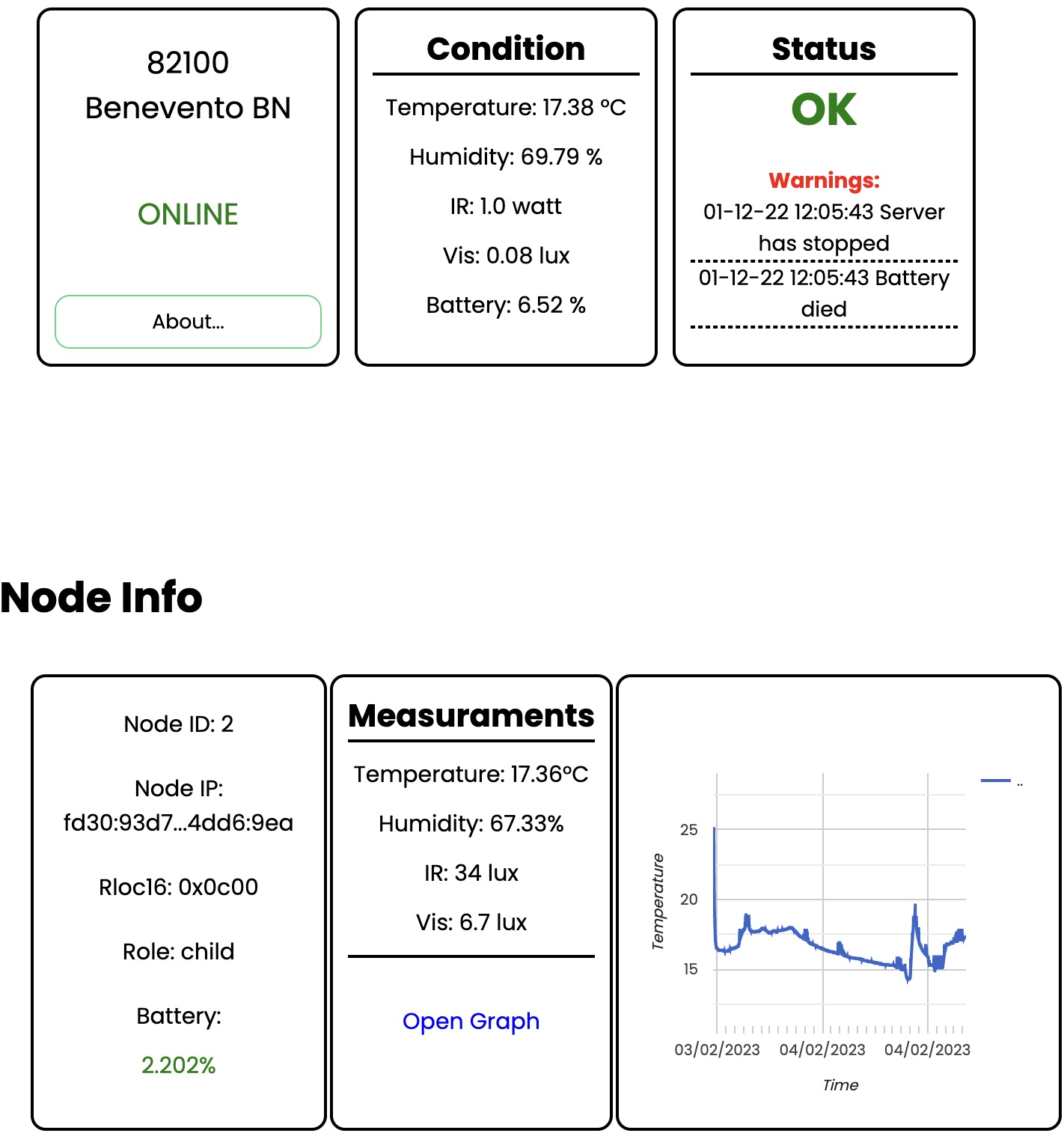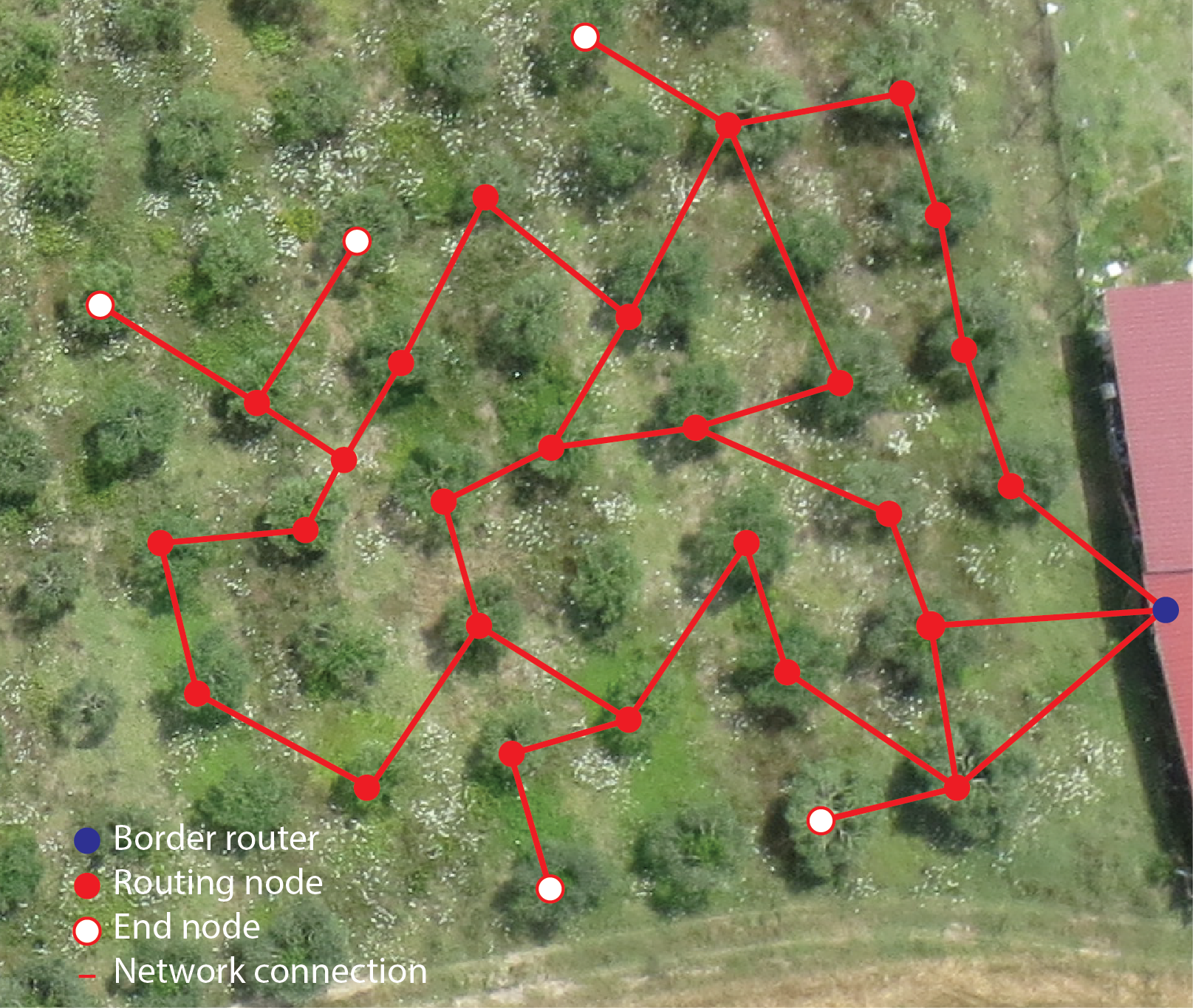Our Goals
Our main goal is to build a tool composed of a Wireless Sensor Network and an aggregation, visualization and prediction system that allows an accurate spatiotemporal monitoring of the status of plants inside a crop. The WSN will be able to measure environmental parameters such as temperature, relative humidity, irradiance, volatile pollutants and trace gasses concentrations. The parameters measured by each node provide information on the status of the crop with a detail that depends only on the number of nodes composing the network and that can reach even a single plant. In addition to local information, trends and dynamics across fields can be obtained in post-processing and this derived information can be useful to organize or suggest farming interventions at the best time. With the aim of highlighting the different information that can be extrapolated by the WSN, an appropriate system of data collection, processing and visualization will be implemented. The in-field tests of the proposed tool will verify real-world crop and water optimisation, which in turn could help to preserve the ecosystem when implemented on a large scale. At the same time, the open AI models could stimulate future projects in the field of precision agriculture thanks to their transferability properties.
The proposed tool could, in the future, contribute to increasing innovation in Italian micro and small farms that at the moment are struggling in maintaining agricultural performance, and thus increase farm production and thus also farm incomes, while preserving environmental sustainability.

A dashboard example

An example of the network structure

